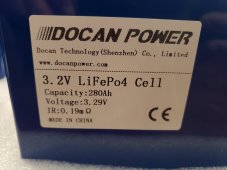NorthTown2022
New Member
Just received 16 280ah grade A EVE cells which are all sitting at about 3.29Voc. It will be a month or two before I have my panels and inverter wired in.
I was told not to bother with a top balance, to just hook them up in parallel and let them sit for a week or so before building my battery. Thoughts?
I purchased the 10A Longwei power supply and have the time. Would it be ok to top balance if cells will be sitting for a month or two at a full SOC?
I was told not to bother with a top balance, to just hook them up in parallel and let them sit for a week or so before building my battery. Thoughts?
I purchased the 10A Longwei power supply and have the time. Would it be ok to top balance if cells will be sitting for a month or two at a full SOC?



